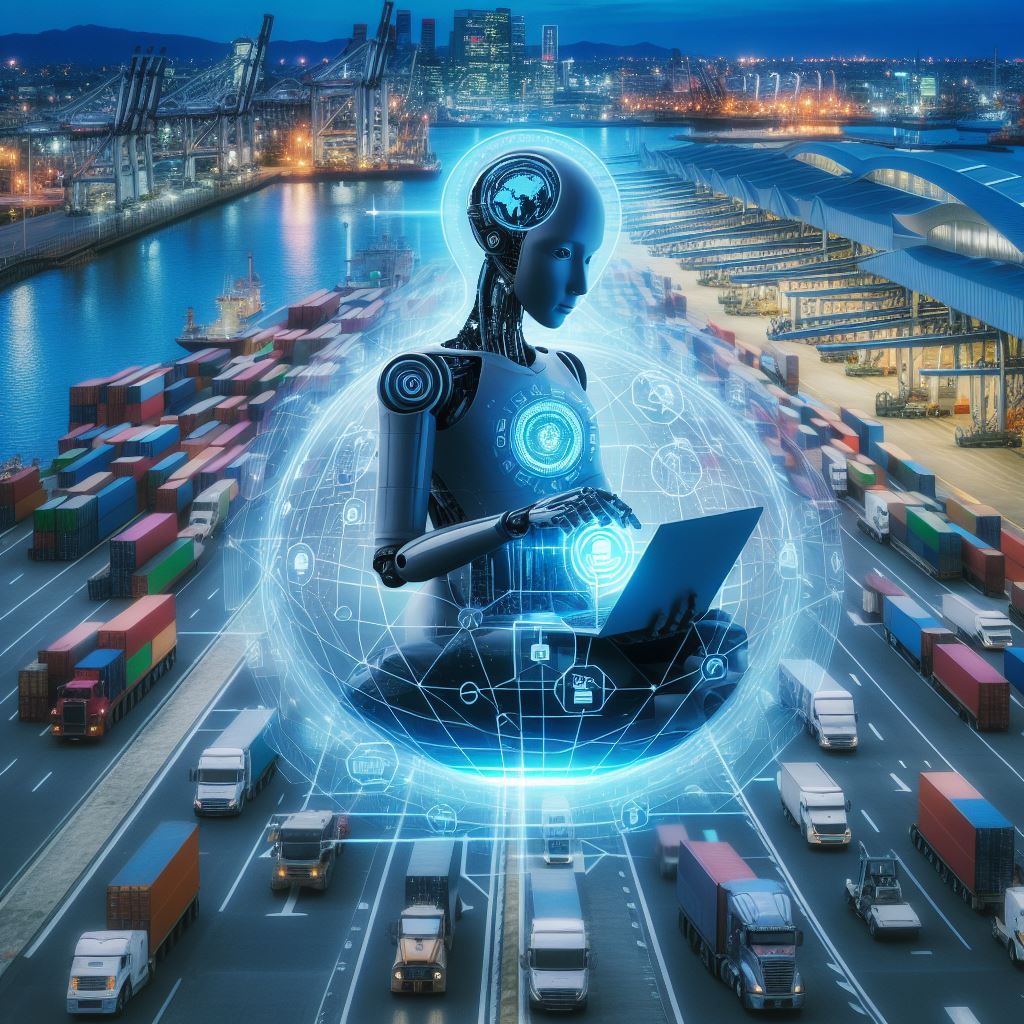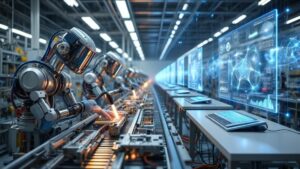Simplifying Customs Clearance: How AI is Changing Logistics
Customs clearance serves as a vital gateway in global trade, ensuring the smooth movement of commodities across international borders. It is a necessary process that entails preparing and submitting documentation required to facilitate the import or export of products. Customs clearance efficiency has a direct impact on the logistics business, affecting lead times, prices, and overall supply chain reliability. The World Bank’s Doing Business 2020 report highlights significant improvements in customs procedures in countries such as Saudi Arabia, Jordan, and China, among others, with reforms aimed at reducing barriers to entry and streamlining business operations.
However, this process is often fraught with complexities due to varying international regulations, extensive paperwork, and the need for precise compliance. Delays in customs clearance can lead to significant disruptions, affecting businesses and economies at large. The World Trade Organization estimates that trade facilitation measures, including streamlined customs procedures, could reduce trade costs by an average of 14.3%. It is in this context that Artificial Intelligence (AI) emerges as a transformative force.
AI is altering customs processes by automating tasks, enhancing accuracy, and streamlining operations. By leveraging technologies such as machine learning, natural language processing, and data analytics, AI is not only simplifying the customs clearance process but also paving the way for a more efficient and secure global trade environment. As we learn more about the role of AI in logistics, it becomes clear that this technological progress is more than a trend; it is a necessity for the future of customs clearance.
The Challenges of Traditional Customs Clearance
Navigating the labyrinth of customs regulations presents a formidable challenge for businesses engaged in international trade. Each country has its own set of rules, tariffs, and documentation requirements, making the customs clearance process a complex and often daunting task. Accuracy is paramount, as even minor errors in classification, valuation, or documentation can lead to significant delays and additional costs.
- Complexity of Customs Regulations: The myriad of international rules and tariffs requires precise compliance to avoid delays and additional costs. Businesses must stay abreast of constantly changing regulations, which demands significant time and expertise.
- Time-Consuming Manual Processes: Reliance on manual paperwork and processing is prone to human error and significantly prolongs the clearance process. The need to manually cross-check and verify information adds layers of complexity and inefficiency.
- Risk of Delays and Financial Penalties: Any discrepancies in documentation can lead to customs holds, disrupting supply chains, and incurring extra charges. Delays not only affect the timely delivery of goods but also lead to additional storage and demurrage charges. Furthermore, regulatory fines for non-compliance, such as incorrect tariff classifications or underreporting of values, can have a substantial financial impact on businesses.
The traditional approach to customs clearance is fraught with challenges that can impede the smooth flow of international trade. The complexity of regulations, the time-consuming nature of manual processes, and the risks of delays and financial penalties all highlight the need for a more streamlined and efficient approach. As global trade continues to evolve, the integration of AI technologies offers a promising solution to these enduring challenges, promising a future where customs clearance is faster, more accurate, and less burdensome.
The Advent of AI in Customs Clearance
The integration of Artificial Intelligence (AI) into customs operations marks a significant leap forward in modernizing global trade processes. By harnessing the power of AI, customs authorities and businesses are transforming the way goods are cleared at borders, making the process faster, more accurate, and less labor-intensive.
Integration into Customs Operations
AI is being integrated into various facets of customs clearance, from document processing to risk assessment. For instance, AI algorithms can automatically extract and verify information from shipping documents, reducing the need for manual data entry and minimizing errors. Additionally, AI-driven systems can analyze historical data and patterns to identify potential risks, enabling customs authorities to focus their inspections on high-risk shipments while facilitating the swift clearance of low-risk goods.
Types of AI technologies used are:
- Machine Learning (ML): ML algorithms are used to predict outcomes based on historical data. In customs clearance, ML can help in classifying goods accurately, determining the appropriate tariffs, and identifying anomalies that may indicate fraud or non-compliance.
- Natural Language Processing (NLP): NLP technology enables the interpretation and understanding of human language in documents. This is particularly useful in customs clearance, where NLP can be used to process and extract relevant information from unstructured text in shipping documents, invoices, and certificates.
- Computer Vision: This technology allows systems to interpret and analyze images and documents. In customs, computer vision can be used to scan and verify the contents of shipments against declared goods, enhancing the accuracy of inspections.
The advent of AI in customs clearance is improving how goods are processed at borders. By automating routine tasks, reducing the scope for human error, and enabling more targeted inspections, AI is contributing to a more efficient and secure customs environment. As technology continues to advance, the role of AI in customs operations is set to become increasingly central, further streamlining global trade and facilitating economic growth.
Benefits of AI in Customs Clearance
The integration of Artificial Intelligence (AI) into customs clearance processes is ushering in a new era of efficiency and accuracy in global trade. By leveraging AI technologies, customs authorities and businesses are experiencing a range of benefits that are transforming the landscape of international logistics.
- Increased Efficiency: One of the most significant advantages of AI in customs clearance is the marked increase in efficiency. AI-powered systems can process vast amounts of data at an unprecedented speed, dramatically reducing the time required for customs declarations and documentation. For instance, machine learning algorithms can automate the classification of goods, streamlining the process and enabling faster clearance. A study by the World Economic Forum suggests that implementing digital customs procedures, including AI, could reduce shipment times significantly.
- Enhanced Accuracy: Accuracy is crucial in customs clearance to ensure compliance with regulations and avoid costly errors. AI technologies, such as natural language processing and data analytics, enhance the accuracy of document processing and goods classification. By analyzing historical data, AI systems can identify patterns and anomalies, reducing the likelihood of misclassification and valuation errors. This precision is vital in maintaining the integrity of the customs process and ensuring that duties and taxes are correctly assessed.
- Risk Management: Customs authorities are responsible for safeguarding borders and ensuring that goods entering a country follow local laws and regulations. AI plays a pivotal role in risk management by predicting and mitigating potential compliance risks. Advanced analytics can assess the risk levels of shipments based on various factors, such as the origin of goods, the track record of the importer, and the nature of the products. This targeted approach allows customs officials to focus their inspection efforts on high-risk consignments, thereby enhancing security and compliance.
- Cost Reduction: The implementation of AI in customs clearance can lead to significant cost savings for both businesses and governments. Automating routine tasks reduces the need for manual labor, lowering operational costs. Furthermore, the increased efficiency and accuracy brought about by AI can reduce the expenses associated with delays, penalties, and additional inspections. According to a report by the United Nations Conference on Trade and Development (UNCTAD), digitizing trade processes, including the use of AI, can save a massive amount of money in the global economy annually.
So, the benefits of AI in customs clearance are manifold, encompassing increased efficiency, enhanced accuracy, effective risk management, and cost reduction. As AI technologies continue to evolve and become more sophisticated, their impact on customs processes is set to grow, further streamlining global trade and contributing to a more secure and efficient international logistics environment.
Challenges and Considerations
While the integration of Artificial Intelligence (AI) into customs clearance offers numerous benefits, it also presents several challenges and considerations that must be addressed to ensure its successful adoption.
Data Privacy Concerns
The use of AI in customs clearance relies heavily on the processing of large volumes of data, including sensitive information related to shipments, businesses, and individuals. This raises concerns about data privacy and protecting sensitive information. Ensuring the security of data and compliance with privacy regulations, such as the General Data Protection Regulation (GDPR) in the European Union, is crucial to maintaining trust and preventing data breaches.
Need for Skilled Personnel
The implementation of AI technologies requires a workforce with specialized skills in data science, machine learning, and AI programming. However, there is often a shortage of such skilled personnel, particularly in developing countries. Training and upskilling existing staff, and attracting new talent, are essential to effectively leverage AI in customs operations.
International Collaboration and Standardization
Clearance is an international process that involves multiple countries and stakeholders. Therefore, international collaboration and standardization in AI adoption are vital to ensure interoperability and consistency across borders. Developing common standards and protocols for AI in customs clearance can facilitate smoother and more efficient cross-border trade.
Regulatory and Ethical Considerations
As AI systems take on more decision-making roles in customs clearance, there are regulatory and ethical considerations to consider. Ensuring that AI systems operate transparently, fairly, and without bias is important to maintain the integrity of customs processes. Additionally, establishing clear guidelines and regulations for the use of AI in customs clearance is essential to ensure accountability and compliance.
So, while AI has the potential to transform customs clearance, addressing challenges such as data privacy, the need for skilled personnel, international collaboration, and regulatory considerations is crucial for its successful implementation. By navigating these challenges, customs authorities and businesses can harness the full potential of AI to enhance global trade processes.
Final thoughts
The integration of Artificial Intelligence (AI) into customs clearance processes is altering global trade by enhancing efficiency, accuracy, and security. AI technologies offer faster processing times, improved risk management, and substantial cost savings. However, challenges such as data privacy concerns, the need for skilled personnel, and the importance of international collaboration must be addressed. Despite these challenges, the future of customs clearance is undeniably linked with AI, promising a more streamlined and secure global trade environment.
To explore how AI can enhance your customs clearance processes and streamline your logistics operations, visit RTS Labs for innovative solutions and expert insights.






